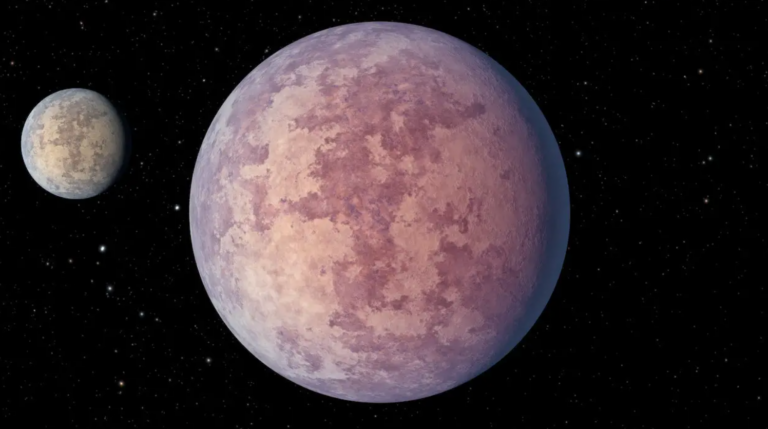Scientists Uncover an Earth-Sized Planet in Our Cosmic Neighborhood
A Nearby Rocky Planet Just 66 Light-Years Away Could Unlock Secrets of Small Planets in Our Galaxy
Astronomers have discovered GJ 1252 b, a rocky exoplanet at a distance of 66.5 light-years from the Earth, orbiting a red dwarf star. Slightly larger and denser than Earth, it takes about 12.4 hours to complete an orbit around it. Its nearness to the star makes its habitability virtually impossible; nevertheless, the system’s proximity and calm nature provide unique chances for detailed research. This will yield a trove of knowledge about the characteristics, formations, and distribution of rocky planets within the galaxy.
Our neighborhood in the cosmos is proving to yield plenty of planets. An Earth-sized planet has been discovered orbiting a red dwarf star just 66.5 light-years away.
This planet, according to the astronomers, provides a wonderful opportunity to fill up the holes ranging from the apparent diameter, temperature to habitability, in our understanding of small, rocky planets roaming through our galaxy.
Since the first confirmation of an exoplanet in 1992, our ability to discover and study them has grown tremendously. Upon counting, over 4,100 confirmed exoplanets have been documented, allowing scientists to gain a better understanding of how planetary systems form and evolve.
Most of the exoplanets that have been discovered have always been large, gas or ice giants, like Neptune or greater, because of difficulties involved in finding faint, faraway objects.
With the successful detection of smaller size exoplanets similar to Earth or Venus, Kepler and TESS missions have made it much easier to look for these smaller yet most likely rocky bodies, which in turn becomes crucial in the search for life as we know it.
The rocky planets must be greater in mass in order to make such types of measurements, but astronomers are still less rare instances than gas vastly. This creates a challenge in the study of its distribution, characteristics, formations, etc.
This is what has made the discovery of GJ 1252 b very significant. The findings have not been peer-reviewed yet and were published on arXiv.
“Here we present the discovery of GJ 1252 b, a small planet orbiting an M dwarf. It was first detected as a transiting planet candidate using the data from TESS,” the researchers said.
The rocky discoveries of Pi Mensae c and LHS 3844 b are 60 and 49 light-years away, while others include TOI-270b (73 light-years away), Teegarden b and c (12.5 light-years away), and Gliese b, c, and d (12 light-years away).
The more of these close rocky planets we find, the more information we will get about their characteristics and commonness. Are most barren like Mercury, Venus, and Mars, or are Earth-like ones more common in the Milky Way?
This has extensive and serious implications foY. GJ 1252 b might be an excellent place to start.
“[T]he proximity and brightness of the host star, combined with the short orbital period of the planet, make this system an excellent choice for follow-up observations,” said the researchers.
Such studies include exploring the thermal emissions from within the planet’s interior, work using Gaia data in the future, and long-term radial velocity reading on either undiscovered stars, brown dwarfs, or massive planets that might orbit that star.
“Using TESS data and additional follow-up observations, we could rule out all the avenues for false-positive candidates to confirm this as a real planet.”
GJ 1252 b is approximately 1.2 times bigger than Earth and twice as massive, which gives it a greater density than Earth. It orbits the red dwarf star GJ 1252, which is approximately 40% of the size and mass of our Sun.
The planet completes its orbit in just 12.4 hours, making it impossible to live close to the star. It is almost a tidally locked planet, which means one side remains in everlasting daytime, but this orbit affords much investigational opportunity.
At just 66.5 light-years away, it is among the nearer systems, and its star is brilliant enough to permit much more study. The red dwarf is unusually quiet, and many transits of the planet in front of its star provide many chances to observe these.
These transits could allow astronomers, if the planet has an atmosphere, to analyze it by the light from the star during that event passing through the atmosphere.
GJ 1252 b is interestingly the latest of a series of TESS-discovered rocky planets nearby.
The research has been submitted to the American Astronomical Society, and is available on arXiv.
Do not forget to share your opinion with us to provide you with the best posts !




0 Comments